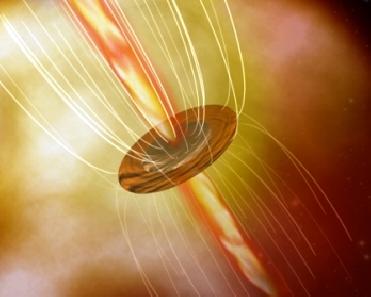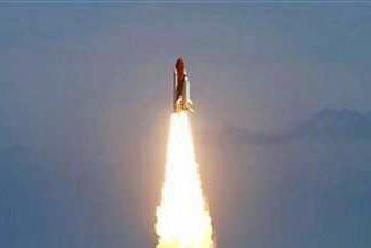
Artist�s impression of the young massive star Cepheus A HW2. A Tobias Maercker Photo.
BERLIN (BNS): Dr. Wouter Vlemmings of Bonn University along with a team of astronomers has unraveled the importance of magnetic fields during the birth of massive stars.
According to a news release by the Royal Astronomical Society, the research team has used the MERLIN radio telescope network centred on the Jodrell Bank Observatory to show that magnetic fields play an important role during the birth of massive stars.
Massive stars are highly significant in the formation of other stars, planets and even life. They dominate the content and evolution of the interstellar material in the Galaxy and are responsible for the production of heavy elements such as iron.
During the observations, the Wouter Vlemmings and his collaborators have found that the magnetic field is surprisingly regular and strong, implying that it is controlling how the matter is transferred through the disk to feed the growing embryonic star.
"Our new technique allows us for the first time to measure the 3D structure of the magnetic field around a massive protostar, said co-author Huib Jan van Langevelde, who is also the director of the Joint Institute for Very Long BaseIine Interferometry in Europe (JIVE).
The researchers, in order to reveal the magnetic field structure, used the MERLIN telescope array to observe radio waves (with a wavelength of approximately 5 cm) that are amplified by methanol molecules.
 Previous Article
Previous Article Next Article
Next Article












The Indian Air Force, in its flight trials evaluation report submitted before the Defence Ministry l..
view articleAn insight into the Medium Multi-Role Combat Aircraft competition...
view articleSky enthusiasts can now spot the International Space Station (ISS) commanded by Indian-American astr..
view article